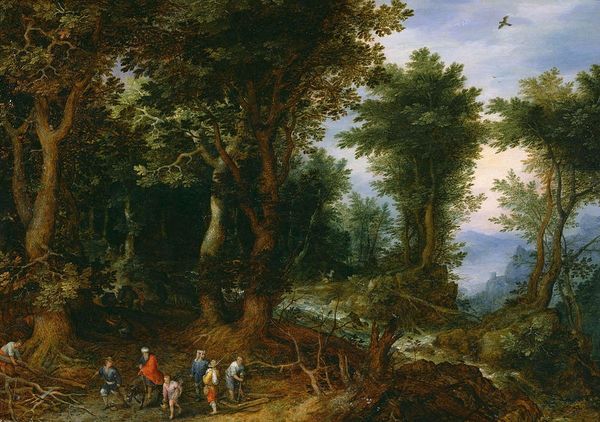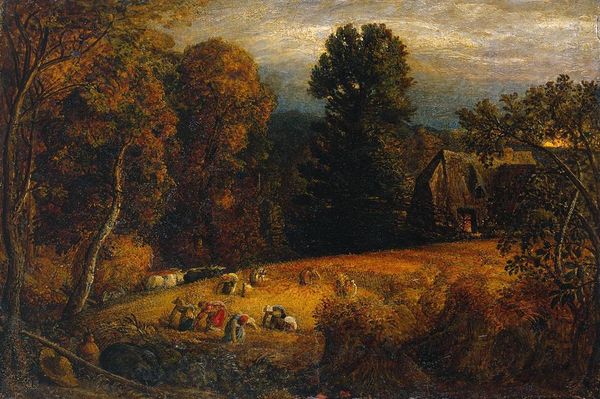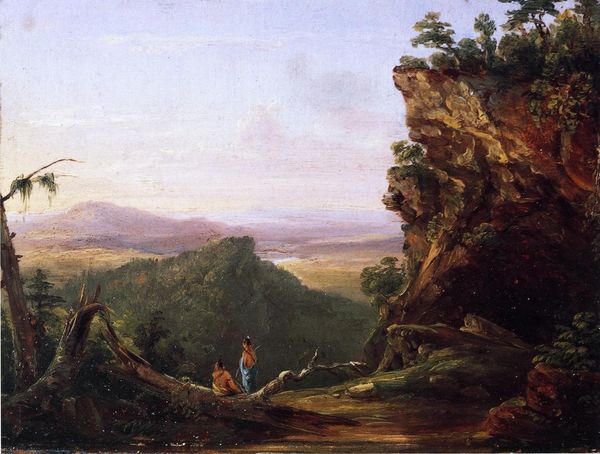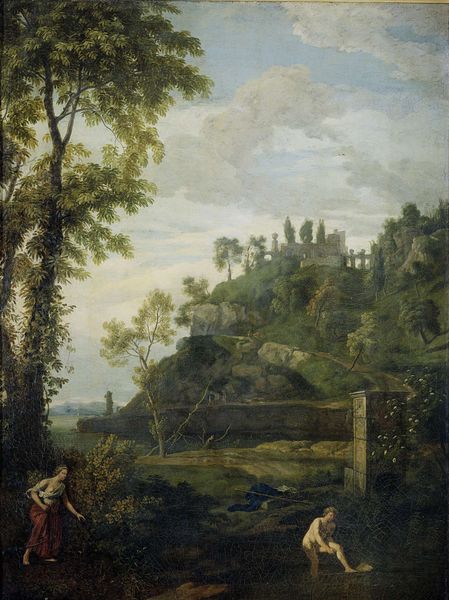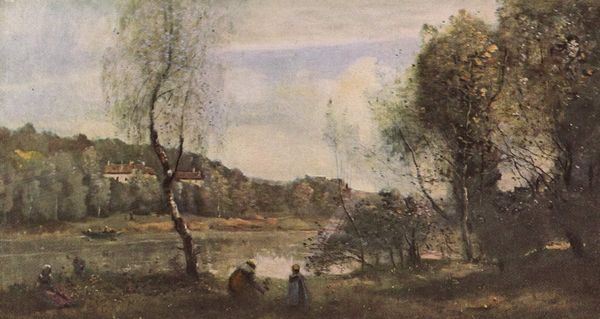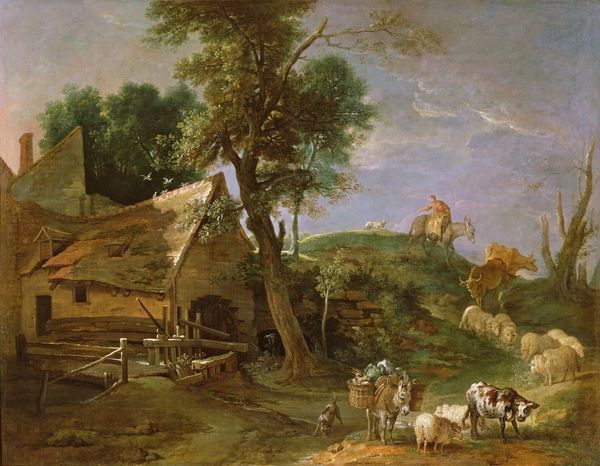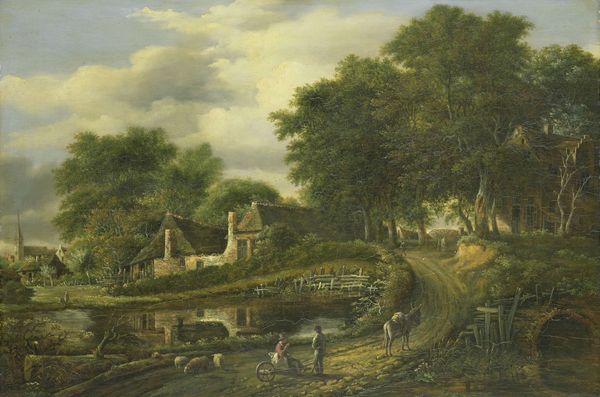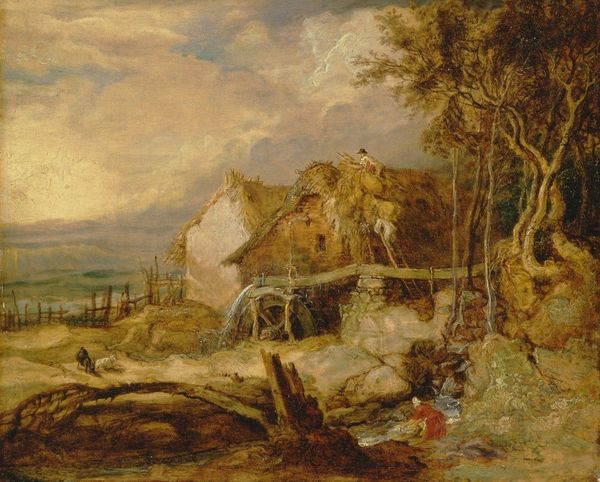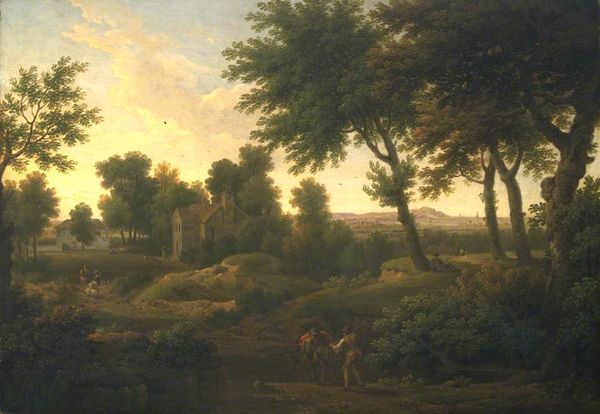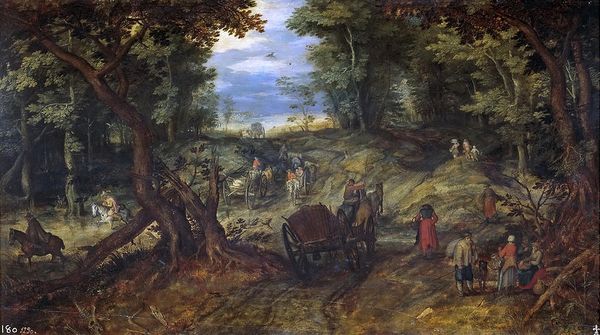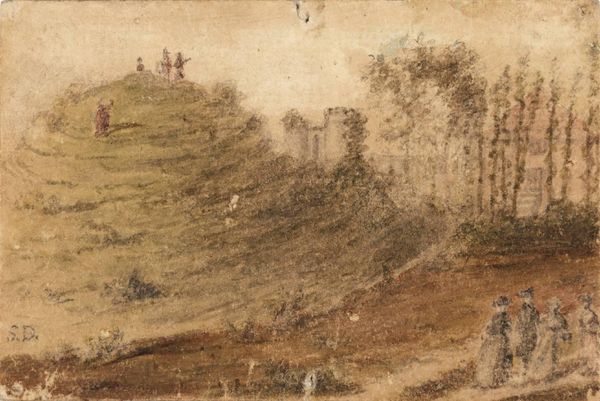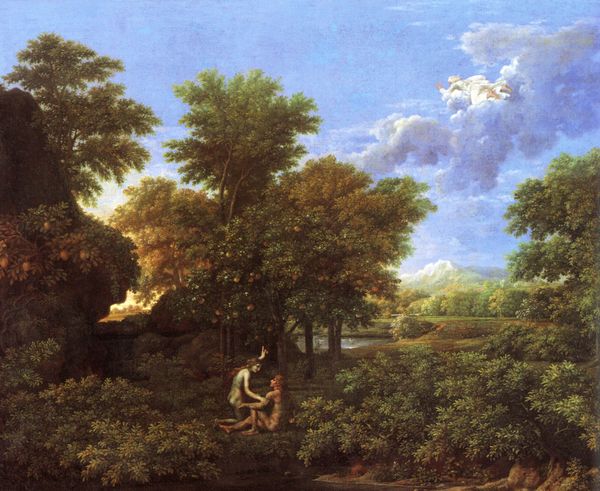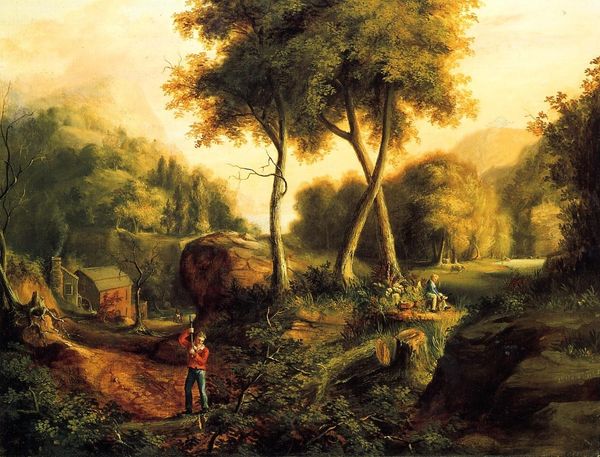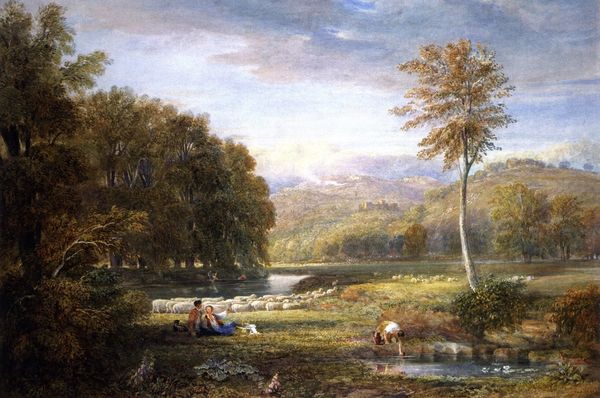
The Magpie on the Gallows 1568
0:00
0:00
pieterbruegeltheelder
Hessisches Landesmuseum Darmstadt, Darmstadt, Germany
painting, oil-paint
#
tree
#
sky
#
painting
#
oil-paint
#
landscape
#
oil painting
#
mountain
#
flemish
#
genre-painting
#
northern-renaissance
#
mixed media
Dimensions: 50.8 x 45.9 cm
Copyright: Public domain
Curator: Pieter Bruegel the Elder's "The Magpie on the Gallows," created in 1568 using oil paint, presents a stark landscape dominated by a prominent gallows. What are your initial observations? Editor: It strikes me as surprisingly serene despite its morbid subject matter. The cool tones of the distant landscape contrast sharply with the immediate foreground, almost inviting a detached contemplation. There's a strange dance happening visually between the beautiful and the brutal. Curator: The composition is undeniably compelling. Note the deliberate arrangement of elements—the placement of the gallows almost precisely at the painting’s center, anchoring the narrative, the stark contrast between the verdant lower depths with the lighter washes of the distant sky, dividing the artwork vertically to great effect. What of the symbolism? Editor: The magpie, perched atop the gallows, traditionally symbolizes gossip. Given the period and Bruegel’s known social commentary, one could interpret the gallows itself as symbolizing injustice and the magpie as a commentary on the role of rumors and societal judgments in meting out punishment. A brutal spectacle turned commonplace. Curator: Exactly. And beyond the magpie, consider the gallows' physical form. Its stark geometry offers an unsettling contrast with the organic curves of the natural environment. The X formed at the top mirrors the crosses present throughout Christian iconography, hinting at themes of sacrifice and judgment inherent to humanity, an attempt to impose artificial order atop chaos. Editor: Yes, and even the landscape itself evokes a certain duality. The distant, serene vista implies freedom and escape, yet the dark, densely forested foreground with the looming gallows traps us in a realm of constraint. Bruegel constantly juxtaposes freedom with bondage. A visual analogy of the period's turmoil, no? Curator: Indeed, one sees the era’s political and religious unrest rendered in paint. And the use of oil allows Bruegel a precision in texture that intensifies the realism and inherent dread. Each brushstroke adds layers of meaning, compelling close scrutiny. Editor: What I find most compelling, perhaps, is that Bruegel leaves much to the imagination. It invites us to consider our roles, our collective culpability, and our relationship to judgment, punishment, and perhaps redemption within a beautifully terrible setting. Curator: Precisely; Bruegel provides us a rich tapestry of visual information from which we can decode society itself, the grim inevitability of social correction, as rendered through masterful form and construction. Editor: Ultimately, Bruegel masterfully combines symbolism and aesthetics, transforming a landscape painting into a poignant mirror reflecting humanity’s darkest inclinations, as unsettling then as it is now.
Comments
No comments
Be the first to comment and join the conversation on the ultimate creative platform.
